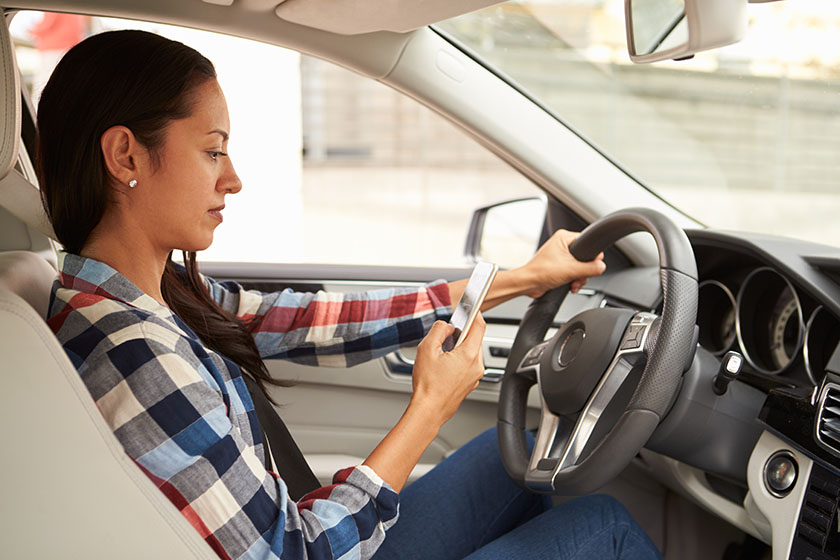Previously posted on Insurance Thought Leadership
For anyone involved in vehicular transportation, it’s accepted that distracted driving is a deadly problem that needs continued attention. Earlier this year, the National Highway Traffic Safety Administration (NHTSA) published a detailed research report on Distracted Driving in 2016. According to the NHTSA’s statistics:
- Nine percent of fatal crashes in 2016 were reported as distraction-affected crashes
- In 2016, there were 3,450 people killed in motor vehicle crashes involving distracted drivers.
- Six percent of all drivers involved in fatal crashes were reported as distracted at the time of the crash.
- Nine percent of drivers 15 to 19 years old involved in fatal crashes were reported as distracted. This age group has the largest proportion of drivers who were distracted at the time of the fatal crashes.
- In 2016, there were 562 nonoccupants (pedestrians, bicyclists, and others) killed in distraction-affected crashes
Notice that teen drivers are the largest proportion of drivers who were distracted at the time of fatal crashes. However, a recent Arity survey shows that millennials are significantly less likely than the general population to say that “I never multi-task while driving” (48% vs 57%). What does this say about this generation? With National Teen Driver Safety Week approaching, it’s important to inform teenagers about the danger of different types of distracted driving.
Here at Arity, we used our own data to compare the rate of smartphone penetration in the U.S., with distracted driving activity of telematics users and industry losses. Our research goes a step further to demonstrate that this problem is only getting worse. The percentage of losses attributed to distraction over the last several years has tripled, costing the industry an estimated $9 billion annually.
The auto insurance industry has taken a multi-pronged approach to reduce different types of distracted driving. In addition to high-profile campaigns designed to raise awareness around distracted driving — AT&T’s #ItCanWait initiative — distracted driving solutions have been developed by insurance providers, OEMs, and sharing economy and telecommunications companies.
As these solutions get closer to reality, there are a few core elements to consider. Here is a five-step process for the creation of a superior recipe for distracted driving detection:
- Mobile phone, no substitutes: While embedded systems and OBD devices are the gold standard for assessing vehicular motion and risky driving patterns, today there is no substitute for the mobile phone in distracted driving detection. The mobile phone is the leading culprit fueling higher rates of distracted driving accidents. Pinpointing mobile phone movement and interaction is the most robust way to identify and prevent these risks.
- One part movement, one part interaction: Phone movement only reveals part of the story. Distracted driving algorithms that rely solely on sensor information ― accelerometer for translational motion, gyroscope for rotational motion, gravitometer for orientation, etc.―will be subject to false positives and false negatives. For instance, a motorcyclist with a phone safely in his pocket could be unfairly penalized each time he puts his foot down at a stop for balance.
- Measure each element carefully: Not all types of distracted driving are equally risky. Checking navigation at a stop light is generally less dangerous than taking a selfie while speeding down the beltline during rush hour. To effectively assess relative risks, there are two fundamental considerations: context and mode. Context means, what were the conditions present at the time of the distracted driving behavior? At what speed was the car being driven; what was the weather like; was there traffic? Mode means, what distracted driving behaviors were taking place? Phone call, texting, navigation, gameplay, etc.
- Monitor continuously: Discrete or instantaneous markers only tell part of the story. For instance, counting only moments of large phone movement omits important information about the behaviors that took place interstitially. We can conceptualize distracted driving in terms of continuous sessions and endeavor to identify the starts and ends of these sessions. The total duration of distracted driving will provide the most predictive metrics for risk.
- Modeling bake-off: Distracted driving models can be founded on logic and intuition, but they should be developed and validated with a data-driven approach. For the best solution to emerge, many alternatives should be assessed relative to their performance on labeled data sets―data sets composed of both telematics data as well as reliable labels for the periods of distracted driving. An example of this blended approach would be the Arity and Allstate research that estimated the cost of distracted driving for the insurance industry at $9 billion. This insight was derived from data sourced from national smart phone usage, vehicle telematics and incident claims data.
At Arity, our mission is to make transportation smarter, safer and more useful for everyone, and understanding and eliminating distracted driving is central to why the company was founded. What’s important is that we don’t see this solely as a technical problem. Combatting different types of distracted driving requires action beyond measuring transportation data. Aside from understanding the behaviors that cause insurance loss, we must also provide meaningful customer experiences to help eliminate harmful driving habits. It’s important that we don’t stop learning and experimenting; there’s so much more we can do to end distracted driving.

